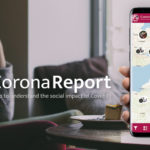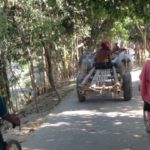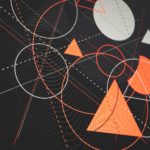The ways in which a ‘non-discriminatory’ virus can very quickly evolve into a disease of the poor
Communicable diseases, we know, affect socio-economically disadvantaged communities disproportionately. But how do these inequalities emerge? We now have a live example in COVID-19.
Until recently, the virus has been non-selective in whom it affects: it could be people in the global North, the non-poor everywhere, people who are not used to being vulnerable to contagious diseases. These are also the people who influence state responses — scientists, policy-makers, commentators. And so lockdown and social distancing were rapidly established as the one-size-fits-all response to COVID-19 globally — despite the variations in the impact of the disease and the serious social consequences of such measures.
While these measures protect people by reducing and slowing down transmission, what has also become quickly apparent everywhere is that they benefit only a minority of the population — those who have salaried jobs, savings, fridges large enough to stock groceries, and homes spacious enough to stay indoors without confinement causing health problems.
Whom they cannot protect are those who face bigger everyday health threats — hunger, homelessness, the risks of more dangerous diseases. If anything, a lockdown adversely affects the vast majority of people for whom this novel coronavirus is a smaller risk when compared to more serious and immediate issues such as hunger, domestic violence or eviction. And when ‘home’ is a room in a slum with community toilets, or when lockdown refugees are transported in buses or housed in makeshift camps, there is clearly greater crowding than if they were outdoors: it might well be that lockdown then exacerbates the spread of the virus among them.
Even in the U.K., where social security systems are stronger, more than 2 million people are estimated to fall through the cracks: sex workers, gig economy workers, the newly self-employed, lone parents in small flats with little savings and no childcare support, women and children subject to domestic violence, and those with other physical or mental ailments.
In the dominant response to COVID-19, there is clearly a deeply uneven distribution of risks and benefits. And this includes inequalities in the impact of the disease. Indeed, there is already evidence from major cities in the U.S. and the U.K. that minority ethnic groups are disproportionately impacted by, and die of, COVID-19 — because they are more likely to be employed in essential services, or live in conditions that don’t allow for social distancing, and are less likely to have access to healthcare.
Political pathogen
And so what was initially a ‘non-discriminatory’ virus is very quickly evolving into a disease of the poor because of the response of lockdown and social distancing. Lockdown flattens the curve, but in the process skews the curve in terms of who is affected. It helps prevent situations where hospitals have to make ethically-charged decisions about whom to prioritise for beds and ventilators — but it does so by displacing ethical questions onto ‘inadequate social security systems’ and amorphous government and private sector processes.
Some argue that social distancing and lockdown have to be in place until there is a vaccine or until healthcare systems are strengthened. But both vaccine and systemic improvements will again be more readily accessible to the middle and upper classes, as is already the case with testing and hospital-based care for COVID-19. So, when the lockdown is finally lifted, COVID-19 will become firmly established as a disease of the poor, like so many other infectious diseases already are.
This is how a pathogen becomes political. This is how health inequalities are created. But this isn’t new; there’s ample research on health inequalities. Yet, as social distancing and lockdown started being replicated across the world as the only appropriate response to COVID-19, there was almost no resistance in the U.K. and the U.S.
On the contrary, there was near-total compliance and those who raised uncomfortable questions were dismissed and shamed. In India, some sections of the media, academia and the Left have actively challenged the lockdown approach from the start, but in the U.K., critical questioning began only after the third week.
The strength of science lies in its openness about uncertainty, and the ability to challenge assumptions and hypotheses. However, with COVID-19, modelling predictions that support lockdown have been presented and accepted as the singular truth. Other equally plausible interpretations querying the lockdown rationale have been condemned or ignored. Countries like South Korea, Taiwan, Sweden and Germany, which have adopted different approaches to COVID-19, have been set aside as anomalies or, in some cases, even had their data on mortality rates questioned.
In India, where transmission and mortality rates have so far been very low relative to population size and density, the dominant narrative is that this is an indicator of inadequate monitoring and reporting, or because the country is yet to experience a peak. There is a reluctance to engage with other explanations.
Some lives only
Why has the lockdown solution become so entrenched? Is it because the debate became inaccurately framed as a conflict between the economy and human lives, when in fact, as one writer pointed out, it is actually a conflict between some lives and other lives? Or does it have to do with the pathogen and disease itself? Is it because those of us in the middle and upper classes are not accustomed to the risk of catching and dying of communicable diseases?
Epidemiological transitions have meant that communicable diseases have become strongly associated with poverty. To be then suddenly faced with a contagious disease that can kill and that cannot be avoided with better nutrition and living conditions must be deeply unsettling. Money and social privilege have temporarily lost their protective function — the list of high-profile people affected by COVID-19 includes Idris Elba, Prince Charles and Boris Johnson.
This situation is further complicated because it appears that many infected people are asymptomatic but can nevertheless transmit the virus. So, suddenly, everyone is at risk and everyone poses a risk — even if being infected does not always lead to disease, and even if having the disease is unlikely to cause death. It is not really possible to develop a public health strategy that selectively protects only those who are vulnerable — because we don’t know who is likely to be vulnerable.
Perhaps this explains why COVID-19 has generated so much fear among the wealthy and the middle classes even though its impacts and death toll pale in comparison to diseases of the poor such as diarrhoeal disease and tuberculosis, each of which kills around 1.3 million people every year. Perhaps this explains the lack of resistance to the ‘There Is No Alternative’ to lockdown narrative.
Some of its strongest advocates, such as hedge fund billionaires, are from sections of society that have always spoken against state investment in public health. Lockdown has made visceral sense to those of us who by virtue of belonging to the middle or upper classes have not really known — until now — what it means to have one’s health vulnerable to factors outside one’s perceived control.
With COVID-19, we have become acutely aware that our health is tied to others, and to what the state does or does not do. We want the state to take ‘strong’ measures that protect us from the rest of society, the rest of humanity. The poor have always known this — that their health is not within their control; that the choice is between drinking no water at all and drinking contaminated water. But their lives have not mattered enough to generate the kind of state-led action that COVID-19 has.
Personal stakes
Perhaps this is why, barring some exceptions, those who have spent their lives investigating health inequalities now seem oblivious to how only one data interpretation has been favoured in the media and by thought-leaders, and others rejected as anti-science. Perhaps we have suddenly lost our capacity for critical reflection because this is an issue in which we have personal stakes. After all, lockdown benefits ‘people like us’, a minority of humankind, even as it actively harms the rest.
The irony is that those who benefit from lockdown do so only because there are others who aren’t going into lockdown and who continue to face the risk of infection. In our deeply interconnected societies, every minute aspect of our everyday lives — from food and water to electricity, phone and internet connections, sewage systems and waste management services, and medical supply chains — depends on the work of other people who, more often than not, are those in low-income occupations. We may cheer them from the safety of our homes on Thursdays or Sundays, but we lose no time in also shaming them for their ‘irresponsible behaviour’ for being out on the roads or in public spaces.
So, what is the alternative? How can we address COVID-19 in ways that don’t further marginalise and harm already vulnerable people?
The first step is to overcome the ‘There Is No Alternative’ loop. Looking beyond lockdown will enable more careful engagement with the evolving science on the disease, the experiences of countries that have considered alternative approaches, and the regional variations in the prevalence and impact of the disease.
Crucially, we must foreground fundamental ethical issues. At this juncture, it is simply not enough to call for better social security measures — all that does is to displace blame and responsibility in time and space. We must instead ask hard and immediate questions about whether it is right to expect the poor to shoulder the burden of measures that don’t really protect them, and worse, can actively harm them.
More specifically, we could examine a strategy that is based on voluntary measures: trust people to decide whether the risks of contracting COVID-19 are higher than the risks of starvation or being beaten to death or dying of some other disease; back it up with the necessary social security interventions so that they have real choices. This is crucial, because no matter how serious a threat the novel coronavirus might pose, there are people everywhere who face and have always faced far greater threats to their lives, health and well-being. We need to think beyond pathogen and infection and act for health.
Last week, I was at a grocery store in Edinburgh when a woman came in to do her shopping wearing a mask, visor and gloves. The elderly shop assistant of South Asian origin smiled kindly at her and said in broken English: “You are very afraid? We are all going to ‘go up’ one day, you know?” This to me captures the essence of the huge social divide that characterises the dominant response to COVID-19.
Krithika Srinivasan is a lecturer in Human Geography at the University of Edinburgh. This post was originally published: https://www.thehindu.com/todays-paper/tp-features/tp-sundaymagazine/many-masks-of-a-lockdown/article31379402.ece










Comments by abhatias